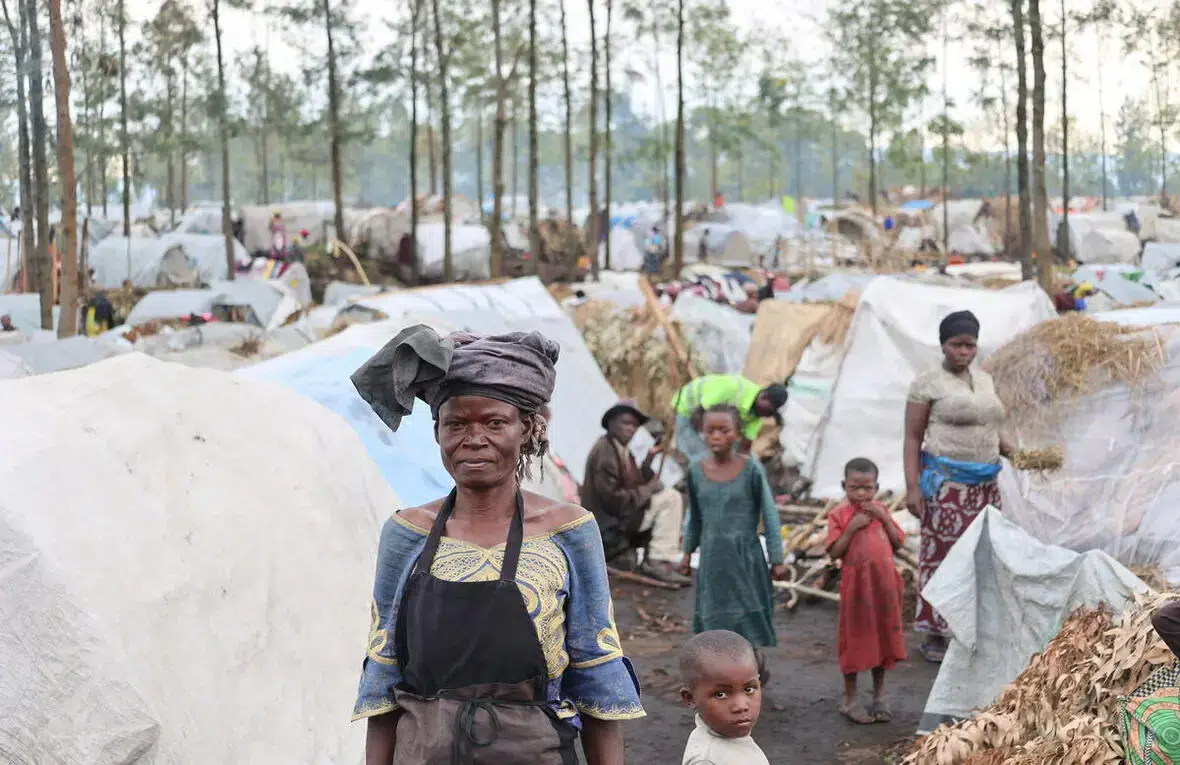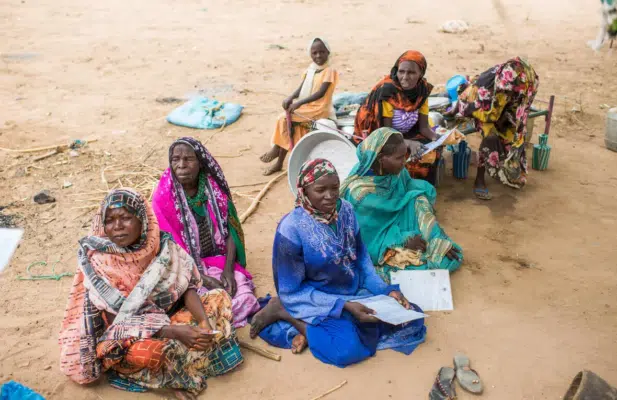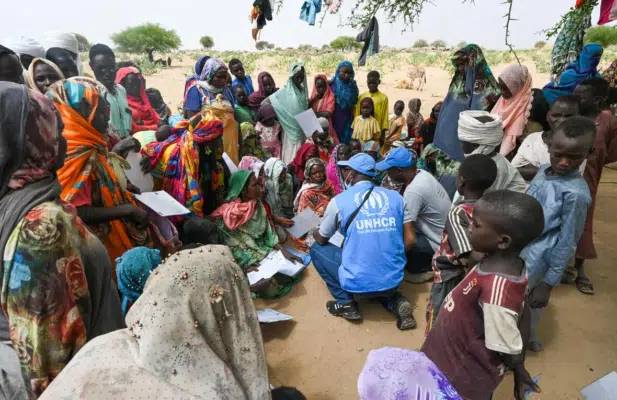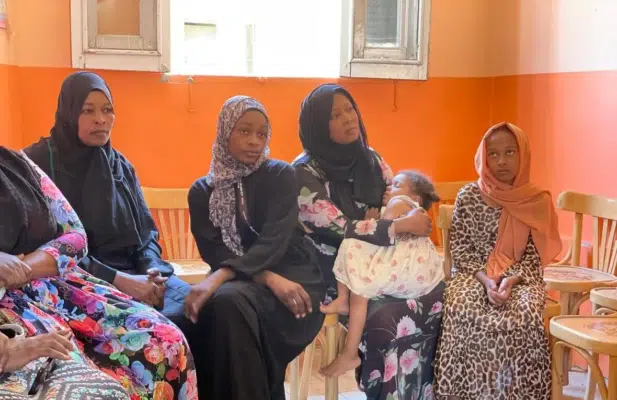
One of the many sites for internally displaced people that have sprung up in North Kivu where 1.2 million people have been forced to flee their homes since March 2022. © UNHCR/Blaise Sanyila
This is a summary of what was said by Elizabeth Tan, UNHCR’s Director of International Protection – to whom quoted text may be attributed – at today’s press briefing at the Palais des Nations in Geneva.
GENEVA — UNHCR, the UN Refugee Agency, is extremely concerned about the devastating consequences for displaced people of recurring attacks by armed groups in the Democratic Republic of the Congo (DRC) and is calling for humanitarian efforts to be urgently supported. With 6.2 million internally displaced people (IDPs), and more than 1.3 million Congolese who have crossed to other countries in Africa to seek refuge, the situation in the DRC is one of the continent’s most complex and long-standing humanitarian crises.
In the eastern DRC’s North Kivu Province, a staggering 1.2 million people have been forced to flee their homes since March 2022 when clashes between armed groups and government forces reignited. Consequently, hundreds of thousands now endure dire living conditions in rudimentary shelters around North Kivu’s provincial capital, Goma, and the Kanyaruchinya district on its outskirts.
In the third week of April, senior UNHCR officials arrived in North and South Kivu to hear the voices of the displaced. Families are longing for peace in their places of origin so they can return to their homes and revive their livelihoods.
Spontaneous displacement sites, at times only a few kilometres from the frontlines of conflict between non-state armed groups and DRC forces in North Kivu, offer relative safety to populations who have been forced to flee the violence. On the outskirts of Goma, and in the adjacent territory of Nyiragongo, as many as 564,000 people remain displaced. A lack of infrastructure and sanitation has led to significant health threats, such as cholera and measles. The monsoon season in recent months has intensified the urgent need for adequate shelter.
In Buchagara, an official IDP site on the outskirts of Goma hosting more than 15,500 displaced people, vulnerable individuals and families are now housed in 3,000 emergency shelters alongside recently installed community kitchens and water and sanitation infrastructure. Currently, the emergency shelter provided only covers 3 per cent of the estimated needs. Women and youth are particularly exposed to protection risks, including gender-based violence. Protection interventions to support women and youth are critical to ease their suffering and prevent abuse and exploitation. Displaced people in the Buchagara site appealed for more shelters for those in need and for livelihood activities in agriculture or small businesses to ease their lack of income. Adequate shelter is key to restoring personal security and dignity.
Conversations with local hosting communities have also underscored the need for proper shelter. More than 180,000 displaced people have recently arrived in Kalehe territory, tens of thousands of whom are sheltering in the town of Minova, a 2-hour drive south of Goma. Local hosting communities have generously shared their limited resources with the displaced populations so far, but they are under enormous strain.
With a lull in clashes in recent weeks following a fragile ceasefire in North Kivu, some displaced people have attempted to return to their homes. However, many of these returnees are motivated by the dire conditions in which they are living and a need to access their homes to cultivate their fields despite the ongoing insecurity.
UNHCR has scaled up its shelter, site management and protection response with generous support from the international community. However, the needs are great. The DRC is one of the most underfunded humanitarian situations globally. UNHCR requires $233 million to respond to the needs of displaced people in DRC this year, but so far, has only received 15 per cent of that amount.
Media contacts:
- In Kinshasa, Joel Smith, smithj@unhcr.org, +243 82 52 57 774
- In Geneva, Eujin Byun, byun@unhcr.org, +41 79 747 8719
- In Ottawa, Levon Sevunts, sevunts@unhcr.org, +1 613-286-6975





